Discover 35 hidden attractions, cool sights, and unusual things to do in Wuppertal (Germany). Don't miss out on these must-see attractions: Wuppertal Zoo, Engels-Haus, and Botanischer Garten Wuppertal. Also, be sure to include Von der Heydt-Museum in your itinerary.
Below, you can find the list of the most amazing places you should visit in Wuppertal (North Rhine-Westphalia).
Table of Contents
Wuppertal Zoo

Also known as: Zoo Wuppertal
Zoo in Wuppertal, Germany. Wuppertal Zoo is a 24-hectare zoo in Wuppertal, Germany. About 5,000 animals representing about 500 species from around the world live at the zoo, including apes, monkeys, bears, big cats, elephants, as well as birds, reptiles, and fish.[1]
Address: Hubertusallee 30, 42117 Wuppertal (Elberfeld-West)
Engels-Haus
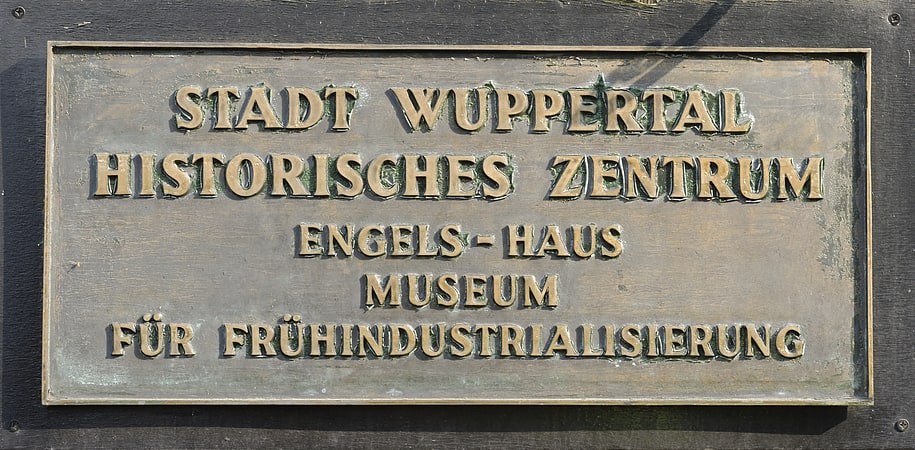
Engels-Haus is a museum in Wuppertal, Germany, located in the house where Friedrich Engels grew up. The museum is a constituent member of the Museum of Industrial Culture in Wuppertal.
The late baroque Berg house was built in 1775 by Eberhard Haarmann in what was then Barmen, Berg. The father of Engels, Friedrich Engels Sr. was born in the house in 1796. Engels himself was born in a different house owned by the family approximately 100 m (330 ft) to the east that has since been destroyed, but spent his youth growing up at Engels-Haus.
The museum was opened in 1970 on the 150th anniversary of Engels' birth, and became a popular destination for socialist tourists. The museum was closed in 2016 for refurbishment. The museum's planned re-opening in 2020 for the 200th anniversary of Engels' birth was canceled due to the COVID-19 pandemic. Nevertheless, in the presence of the Minister for Culture and Science of the State of North Rhine-Westphalia, Isabel Pfeiffer-Poensgen, and over 300 guests, the museum was reopened with the new permanent exhibition on the life and work of Friedrich Engels on 11 September 2021. The highlight of this event was the unveiling of the international art project Inside out Engels.[2]
Address: Friedrich-Engels-Allee 378, 42283 Wuppertal (Barmen)
Botanischer Garten Wuppertal

Botanical garden with a large glasshouse. The Botanischer Garten Wuppertal, also known as the Botanischer Garten der Stadt Wuppertal, is a municipal botanical garden located at Elisenhöhe 1, Wuppertal, North Rhine-Westphalia, Germany. It is open daily without charge.
The garden dates to 1890 when a botanical school garden was first created on a 4600 m² plot that is now the Rose Garden. Between 1908-1910 it relocated to today's site, the Villa Eller'schen, a former country house of textile manufacturers named Eller, which contained a villa (built 1820), orangery, residential and farm buildings, and the Elise Tower (built 1838) which provides the garden's focal point. After Wuppertal was established in 1929, it became a municipal botanical garden. In 2006 three new greenhouses were constructed on the former site of the city nursery, thus extending the garden: a large demonstration greenhouse (400 m²) and two smaller ones (each about 100 m²).
Today the garden cultivates about 400 protected species of the genus Babiana, Cyclamen, Gladiolus, Iris, Moraea, Paeonia, Scilla, etc. The large greenhouse contains tropical crops, exhibition and event space, and room for overwintering plants. The smaller greenhouses exhibit bulbs, tuber plants, and cacti.[3]
Address: Elisenhoehe 1, 42107 Wuppertal (Elberfeld)
Von der Heydt-Museum
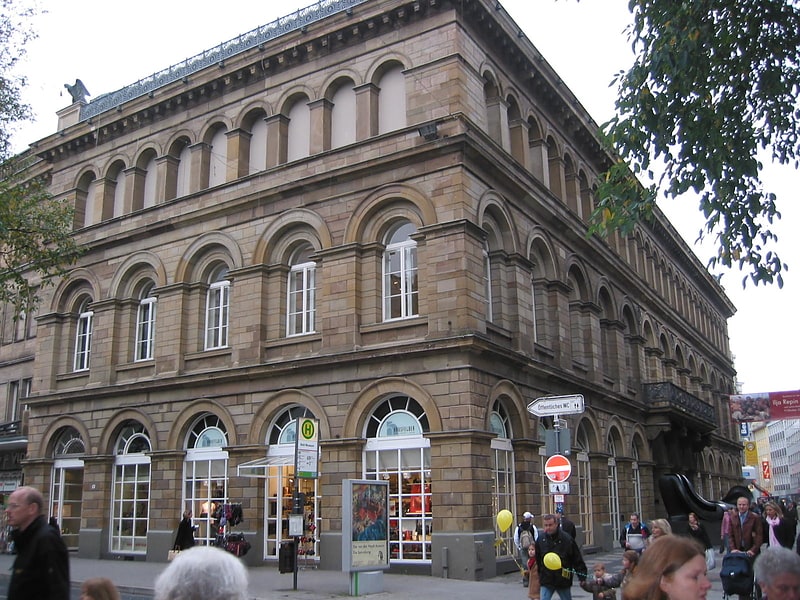
Art collections in the former town hall. The Von der Heydt Museum is a museum in Wuppertal, Germany.
The Von der Heydt Museum includes works by artists from the 17th century to the present time.[4]
Address: Turmhof 8, 42103 Wuppertal (Elberfeld)
Bergische Museumsbahnen
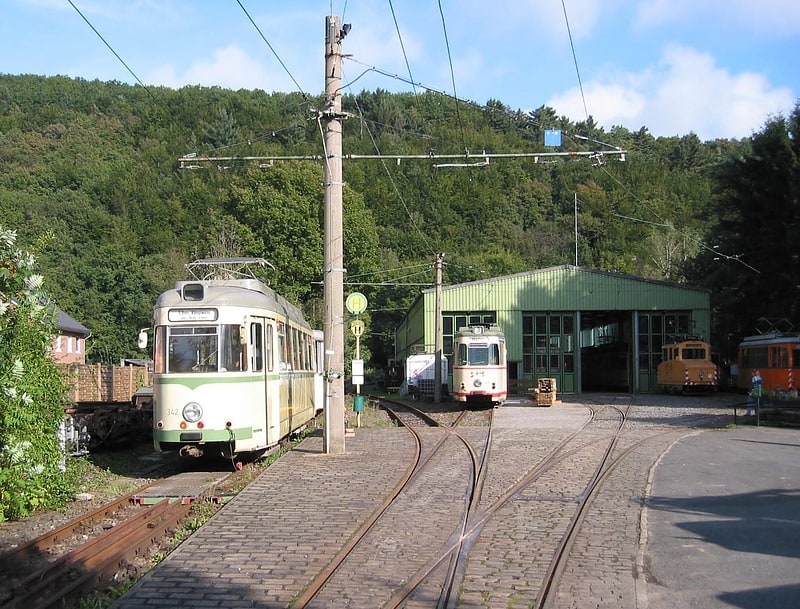
Also known as: Bergisches Straßenbahnmuseum
Museum. The Bergische Museumsbahn is a heritage tram museum situated in the German city of Wuppertal. It operates its own tram line south of Wuppertal on original rails with original cars. Therefore, it's one of the smallest running tram systems in the world. Wuppertal still operates the "Schwebebahn", a unique overhead railway.[5]
Address: Kohlfurther Bruecke 57, 42349 Wuppertal (Cronenberg)
Brasserie im Opernhaus
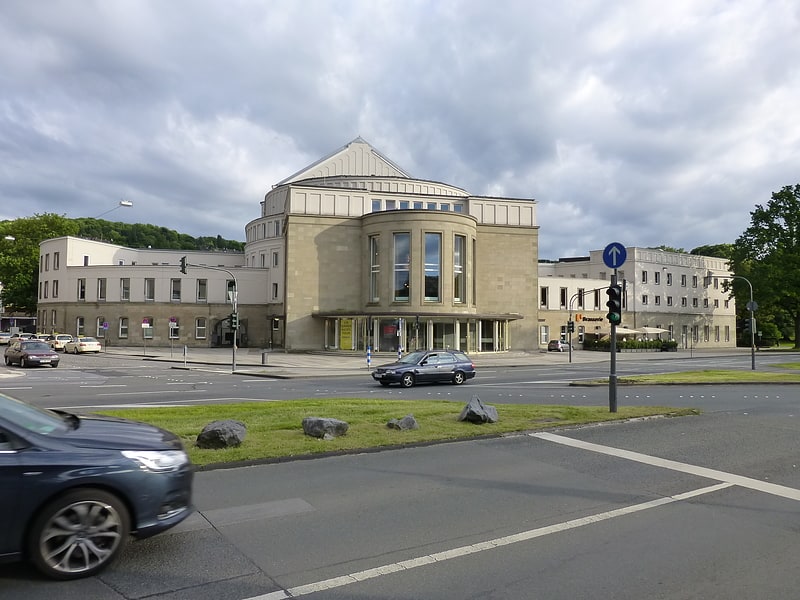
Also known as: Opernhaus Wuppertal
Theatre in Wuppertal, Germany. Opernhaus Wuppertal is a German theatre in Wuppertal, North Rhine-Westphalia. It houses mostly performances of operas, but also plays, run by the municipal Wuppertaler Bühnen. The house is also the venue for dance performances by the Tanztheater Wuppertal company created by Pina Bausch.
The house was built in 1905 on a design by Carl Moritz as the Stadttheater Barmen ("Barmen Municipal Theatre"). It was rebuilt after being severely damaged during World War II and again restored over the period 2006–2009. The theatre is located in the center of Wuppertal-Barmen, served by the Wuppertal Suspension Railway and Wuppertal-Barmen station.[6]
Address: Kurt-Drees-Straße 4, 42283 Wuppertal (Barmen)
KZ Kemna
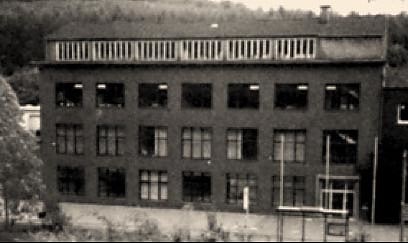
Nazi concentration camp. Kemna concentration camp was one of the early Nazi concentration camps, created by the Third Reich to incarcerate their political opponents after the Nazi Party first seized power in 1933. The camp was established in a former factory on the Wupper river in the Kemna neighborhood of the Barmen quarter of Wuppertal. It was run by the SA group in Düsseldorf.
The purpose of the early concentration camps was to repress and terrorize opponents of the new regime, primarily communists, but also socialists, dissenting Christians, and trade unionists. Unlike later concentration camps, the prisoners and the guards at Kemna were from the same cities and in many cases, knew each other and were already enemies from the German Revolution of 1918–1919 and subsequent political battles of the 1920s. Torture was practiced and the screams of the men were audible to people living and working nearby, and severely injured men were taken to nearby hospitals, all causing word of the camp's misdeeds to spread quickly. There was a major release of prisoners in October 1933; those released were forced to sign a document promising to keep secret all they had seen and experienced at the camp, and were threatened with re-arrest if they disobeyed. The Nazis wanted the public to become familiar with the term "concentration camp" and regard it with dread, but worried that the excesses at Kemna and the other early concentration camps would turn public opinion against them and thwart their plans. As a result, the camp was closed in January 1934, just six months after it opened. After the SA lost political influence, reports of torture led to an investigation and eventually to hearings and the perpetrators given a warning. No crimes were prosecuted.
After the war, the Kemna Trial became the first major German trial regarding a concentration camp. Nonetheless, the camp was afterward largely forgotten, with no research into its past and for decades, only two sources supplying most of the information known about the camp. In 1983, a monument honoring the prisoners who suffered there was installed across the street from the former concentration camp; the builders of the monument were forbidden by the owner of the property from erecting any memorial on the site itself.[7]
Schauspielhaus Wuppertal
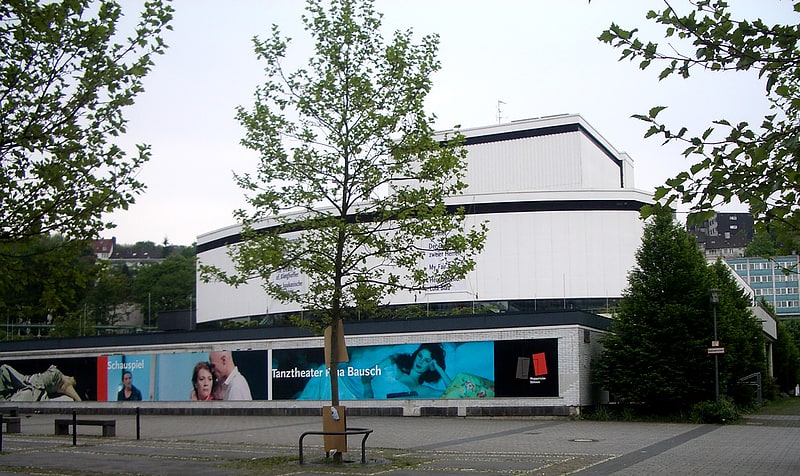
Also known as: Schauspielhaus
Theatre in Wuppertal, Germany. Schauspielhaus Wuppertal was a Schauspielhaus, a theatre for plays, in Wuppertal, North Rhine-Westphalia, Germany. The 745-seat municipal theatre is on Bundesallee next to the river Wupper in Elberfeld. Designed by Gerhard Graubner, it was opened in 1966, run from 2001 by 'Wuppertaler Bühnen'. Starting in 2009, the house operated only 135 seats, and it was closed on 30 June 2013.[8]
Address: Wuppertal, Bundesallee
Rex Filmtheater
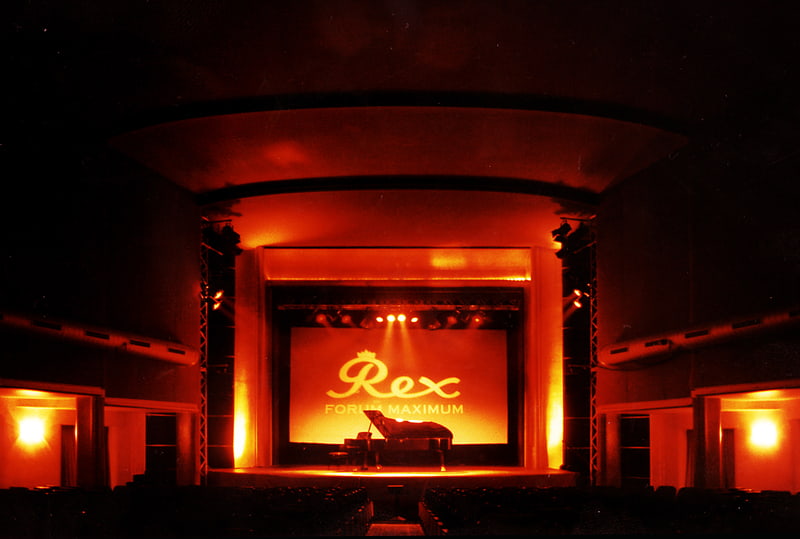
Also known as: Rex-Theater
Theatre in Wuppertal, Germany. Rex-Theater is a historically protected theatre in Wuppertal, North Rhine-Westphalia, Germany.[9]
Address: Kipdorf 29, 42103 Wuppertal (Elberfeld)
Lego-Brücke

Bridge in Wuppertal, Germany. The Lego-Brücke is a concrete beam bridge which crosses over the Schwesterstraße in the North Rhine-Westphalian city of Wuppertal, Germany. In 2011, graffiti and street artist Martin Heuwold repainted the bridge in the style of Lego bricks, receiving national and international media attention for his work. The work was awarded the Deutscher Fassadenpreis in 2012.[10]
Alte Kirche
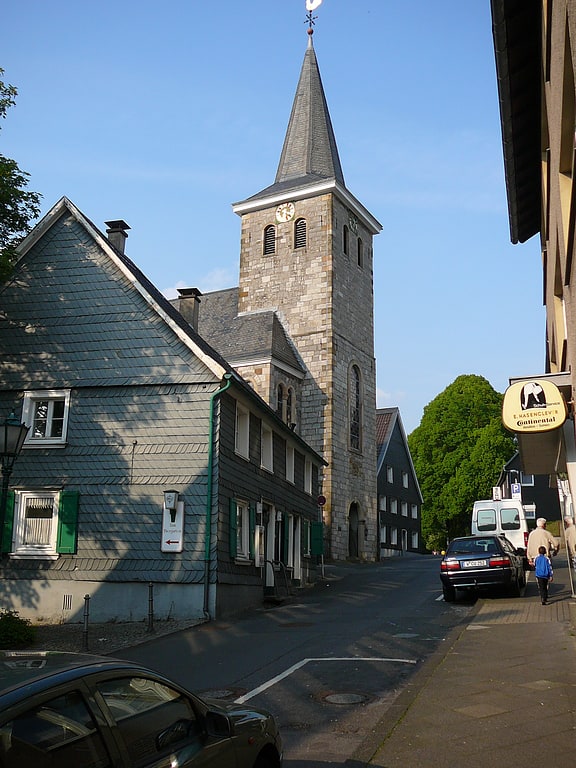
Evangelical church in Wuppertal, Germany. The Alte Kirche is a Protestant church in the district Langerfeld of Wuppertal. It is one of two churches of the Protestant congregation Langerfeld and is located between the Odoakerstraße and the Schwelmer Straße. It was built from 1768 to 1786; the first service took place on 24 September 1786, and was celebrated to the memory of Frederick II of Prussia.
In 2015, when the congregation celebrated her 250th jubilee, the church was redeveloped Inside and Outside extensively.[11]
Address: Odoakerstraße 5, 42399 Wuppertal (Langerfeld-Beyenburg)
Lichtscheid
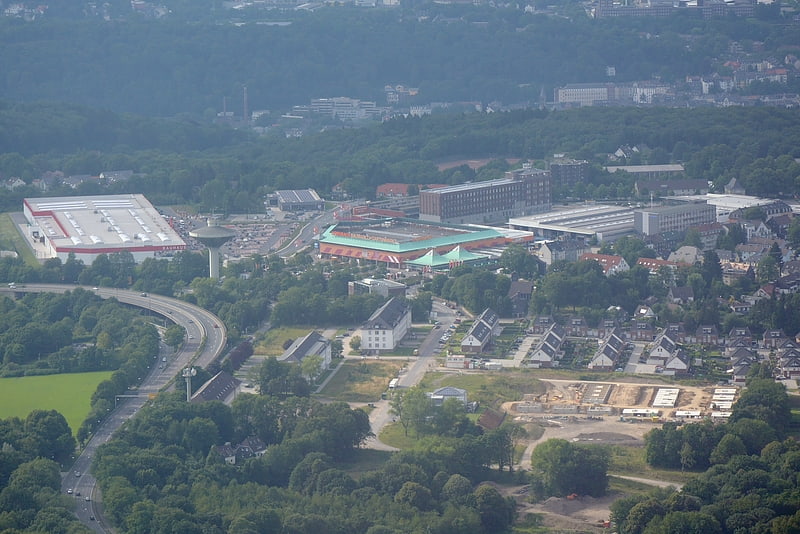
Hill in Germany. The Lichtscheid is the highest hill of the German city of Wuppertal.
It has an elevation of 350 metres (1,150 ft).[12]
Address: 71 Schliemannweg, Wuppertal (Barmen)
Cronenberg Protestant Cemetery
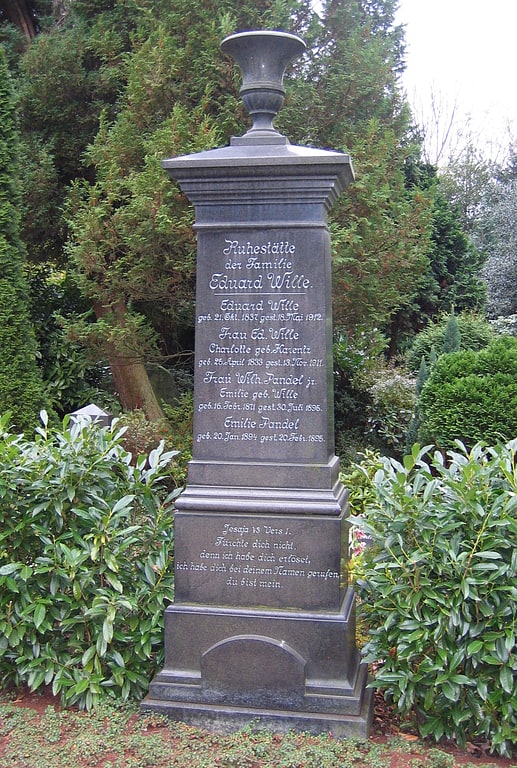
Also known as: Evangelischer Friedhof Cronenberg
Cemetery in Wuppertal, Germany. Evangelischer Friedhof Cronenberg is a historic church-operated Protestant cemetery in the Cronenberg district of Wuppertal. The cemetery is still used for burials.[13]
Address: Hauptstraße 44, Wuppertal (Cronenberg)
Theater in Cronenberg
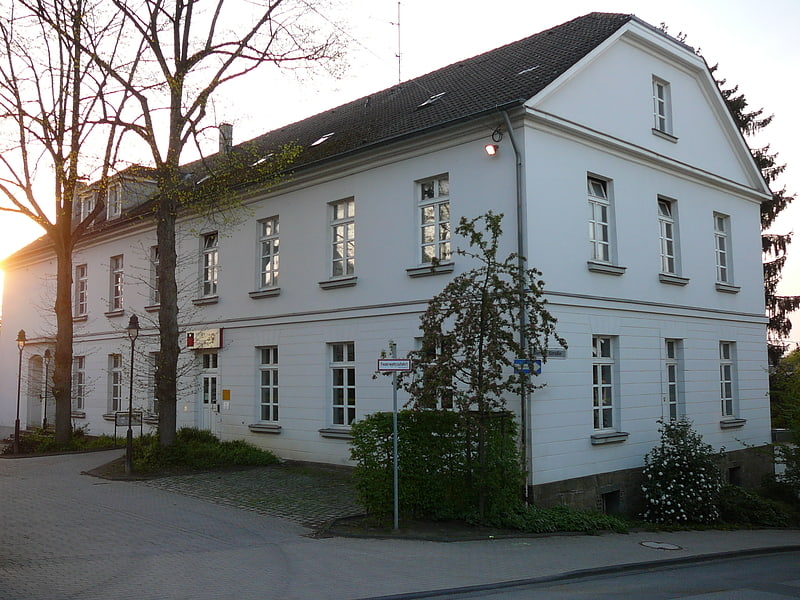
Theatre. Theater in Cronenberg is a theatre in Wuppertal, North Rhine-Westphalia, Germany.[14]
Museum für Frühindustrialisierung
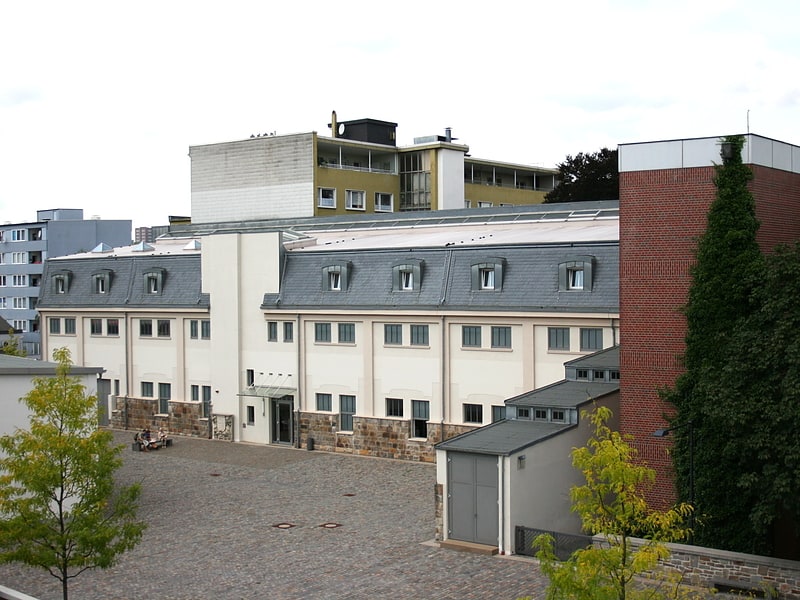
The Museum of Early Industrialization is an industrial and social history museum in Wuppertal-Barmen. It is a location of the Museum Industriekultur Wuppertal.
The theme of the museum is the early development of industry in Wuppertal in the multifaceted interplay of factors related to the history of technology, society, the economy and mentality.
The museum was opened in 1983 and was the first social history museum to focus on industrialization. It is expected to be closed until spring 2023 for extensive renovation work and the installation of a new permanent exhibition.
Address: Engelsstraße 10, 42283 Wuppertal (Barmen)
Knipex
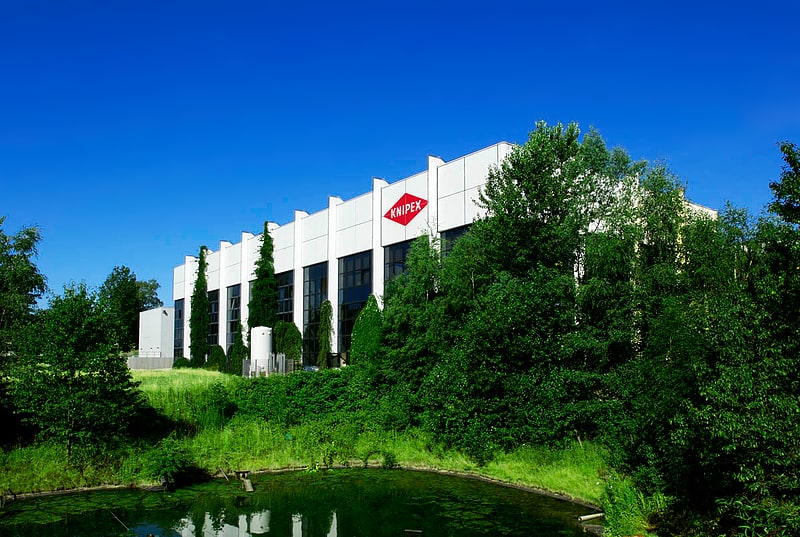
Knipex is a German manufacturer of pliers, pliers wrenches, and other tools, distributed for global sales. Its tools are principally for professional use in various trades, but they are also increasingly popular for DIY and EDC use as well.
For four generations, Knipex has been an independent, owner-managed family company. Its headquarters are located in Wuppertal-Cronenberg.[15]
Bismarckturm Wuppertal
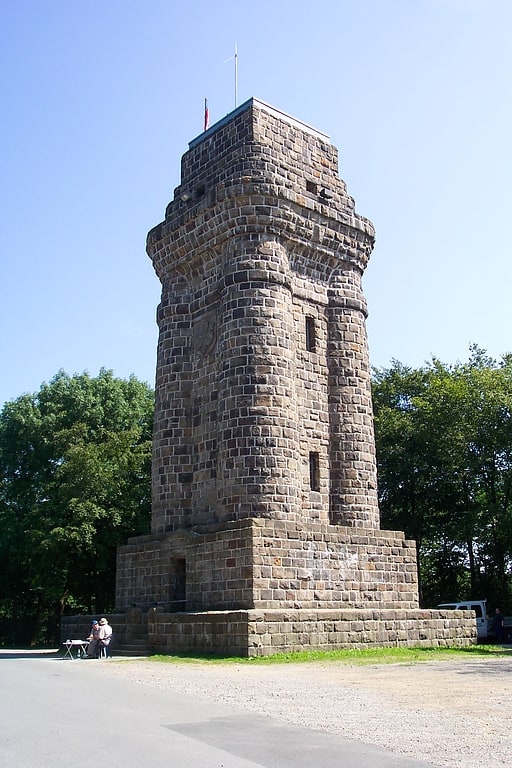
View point, Tower
Address: 3 Reichsallee, Wuppertal (Barmen)
Kulturzentrum Bandfabrik
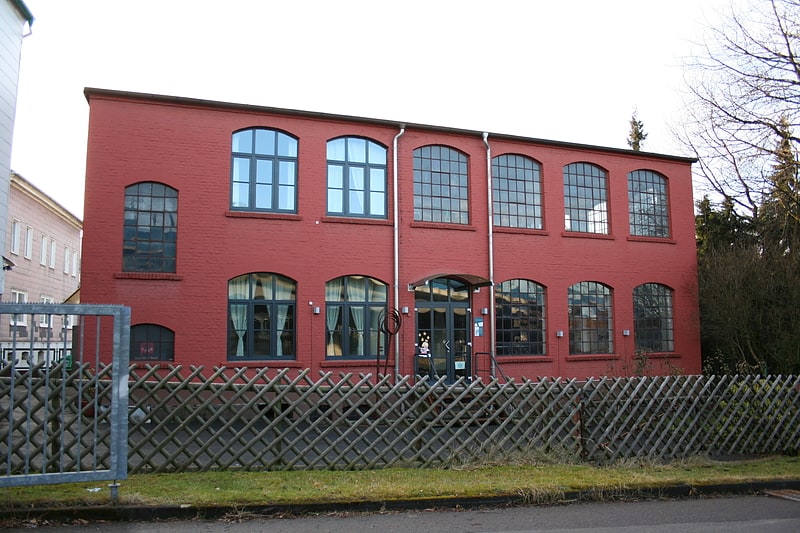
Theatre in Wuppertal, Germany. Kulturzentrum Bandfabrik is a theatre in Wuppertal, North Rhine-Westphalia, Germany.[16]
Address: Schwelmer Straße 133, Wuppertal (Langerfeld-Beyenburg)
Barmer Anlagen
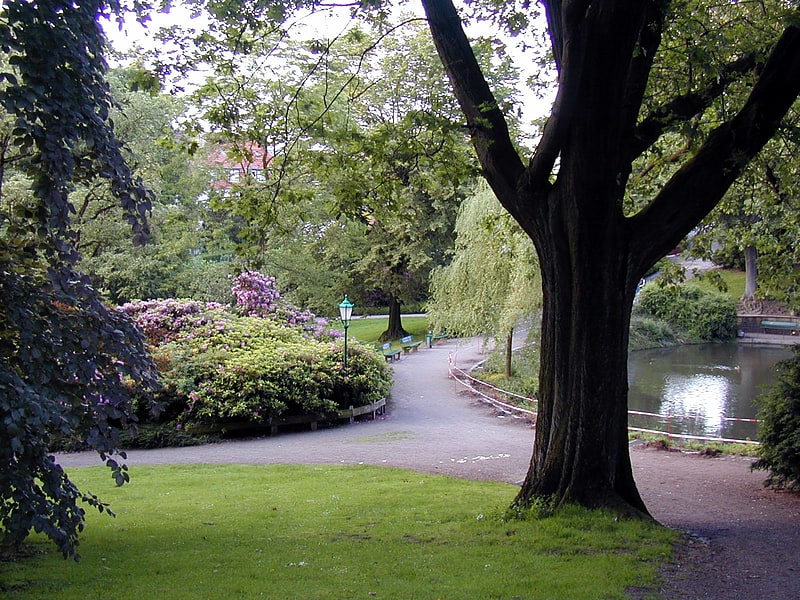
The Barmer Anlagen are the second largest private park in Germany, which is nevertheless freely accessible to the public. They are located in the Wuppertal district of Barmen, which was an independent major city in the Bergisches Land region until its unification with the neighboring city of Elberfeld in 1929. The grounds were designed from 1864 onwards according to plans by the royal horticultural director Joseph Clemens Weyhe.
The park extends from the Heidt residential district on the southern edge of the Barmer inner city area up to the Barmer Südhöhen with the Barmer forest around the Toelle Tower at an elevation of 330 meters above sea level in the Lichtenplatz residential district. The difference in elevation between the northern part and the highest elevation is about 135 meters with a length extension in north-south direction of about 1200 meters. The area, including the part of the Barmer Forest belonging to the facilities, is about 300 hectares, of which 77 hectares are owned by the Barmer Verschönerungsverein and 212 hectares by the city of Wuppertal. About 100 hectares of the grounds are designed as landscape gardens.
The Barmer Anlagen are divided into three parts by the east-west running roads Untere Lichtenplatzer Straße, which is qualified as state road 419, and Lönsstraße. The smaller part of the Barmer Anlagen, north of Untere Lichterplatzer Straße and at its lowest point, has a park-like character with two ponds and lawns with old trees. In the central part, where more ponds and more extensive lawns have been laid out, the landscape garden merges with the Barmer forest as the elevation rises. The southern part, especially south of Lönsstraße down to the Murmelbach valley, consists mainly of a closed forest area with numerous forest paths. At the highest point is the Toelle Tower, which can be climbed as a lookout tower on selected days during the summer months.
There are numerous monuments, memorial stones and commemorative plaques on the grounds. One of the monuments commemorates the Barmer Bergbahn, a rack-and-pinion railroad that was shut down in 1959 and whose former route led for long stretches through the park to the Toelle Tower and whose course was made recognizable in the form of a double row of granite steles in the park grounds as part of the Regionale 2006. The very attractively designed Vorwerkpark and a cemetery of honor, which is enclosed by the park, adjoin the facilities. Furthermore, the park grounds included the sites of the buildings of the Barmer Stadthalle, the Barmer Planetarium and the Meierei Fischertal, which were destroyed in the Second World War and not rebuilt.
The Barmer gardens have been in the care of the Barmer Verschönerungsverein (Barmer Beautification Association) since the beginning, which is financed by membership fees and donations and pays for their upkeep. They are one of 57 parks and landscape gardens on the Road of Garden Art between the Rhine and the Meuse, a cross-border association of particularly beautiful and high-quality, mostly historic gardens in North Rhine-Westphalia and the Netherlands.
In September 2013, the European Garden Heritage Network (EGHN) announced that the Barmer facilities would be named a partner garden and receive the EGHN plaque in the year of its 150th anniversary, 2014. This makes them one of currently 180 European gardens in the network of culturally and historically significant gardens. The plaque was presented by LVR representatives on February 14, 2014.
Address: Untere Lichtenplatzer Str., 42289 Wuppertal (Heckinghausen)
Alte Synagoge
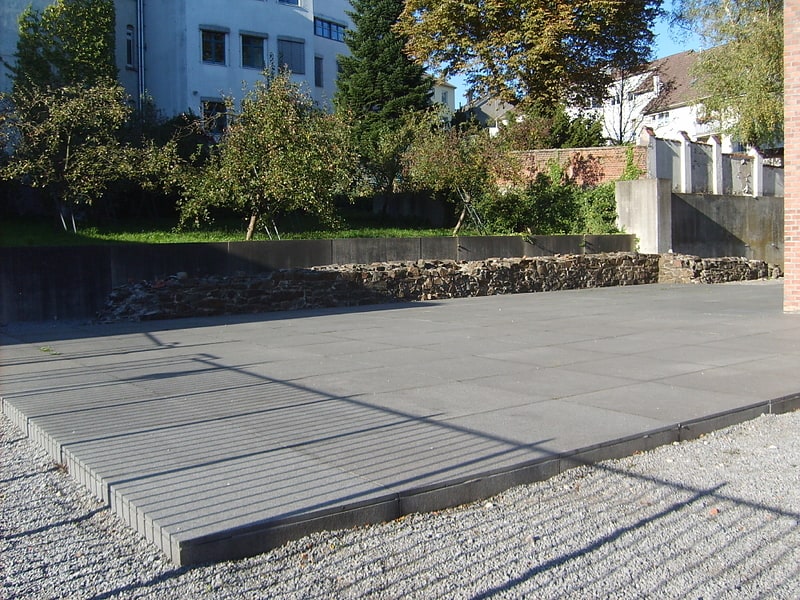
The Old Synagogue was the meeting house of the Jews in Elberfeld from 1865 to 1938; until the construction of the Barmer Synagogue in 1897, it also served as a synagogue for the Jews of Barmen.
University Library of Wuppertal
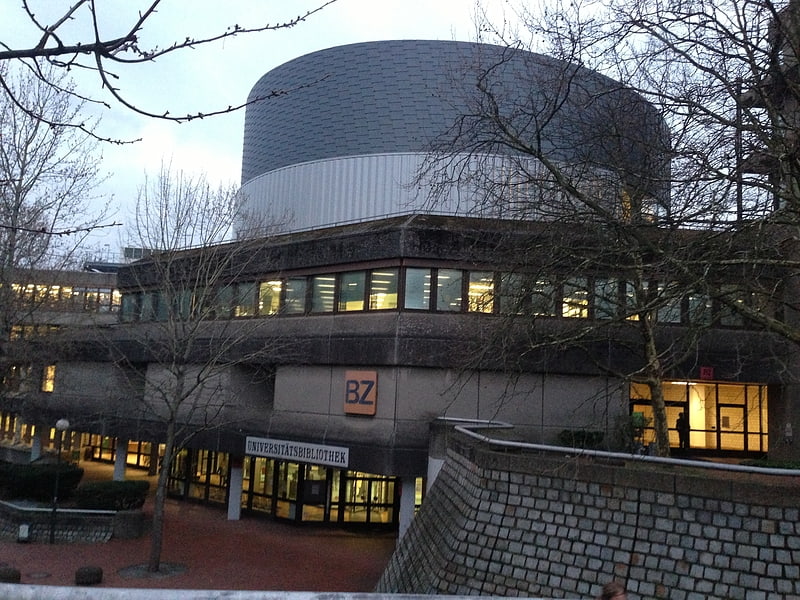
Also known as: Universitätsbibliothek Wuppertal
University library in Wuppertal, Germany. The University Library of Wuppertal is a central service institution of University of Wuppertal in Wuppertal, Germany. The main building at main campus Grifflenberg holds five special libraries while both sub campuses Haspel and Freudenberg hold one special library each.
About 16,000 people use the library on a regular basis and borrow about 1.9 million books per year.[17]
Address: Gaußstraße 20, Wuppertal (Elberfeld)
Polizeipräsidium Wuppertal
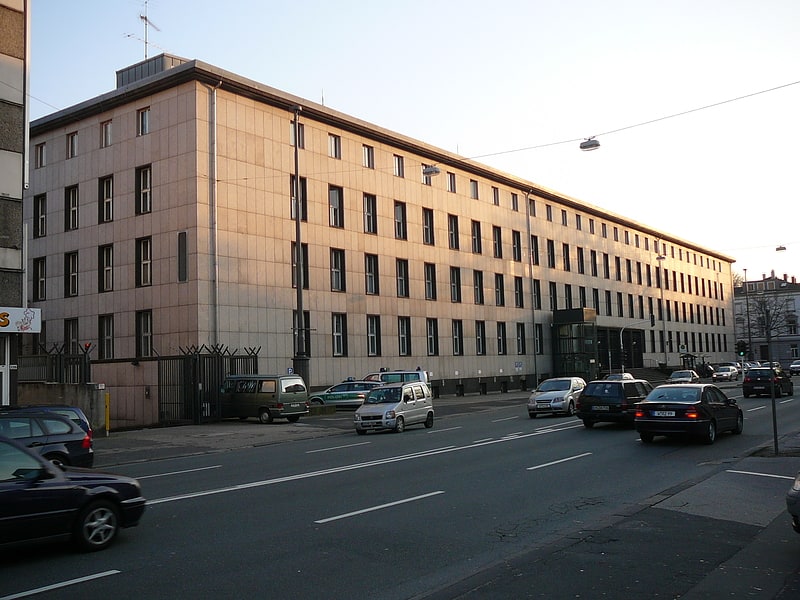
The Polizeipräsidium Wuppertal is a part of the North Rhine-Westphalia Police. The jurisdiction spans the cities of Wuppertal, Remscheid and Solingen. Head of authority is Leitender Polizeidirektor Dietmar Henning.[18]
Hardtanlage

The Hardt-Anlagen, or usually abbreviated the Hardt, are a park on the partially forested elevation Hardtberg in the inner-city area of Wuppertal, on the border between the districts of Elberfeld and Barmen.
The Hardt facilities are one of the oldest city parks in Germany and part of the Road of Garden Art.
Skulpturenpark Waldfrieden
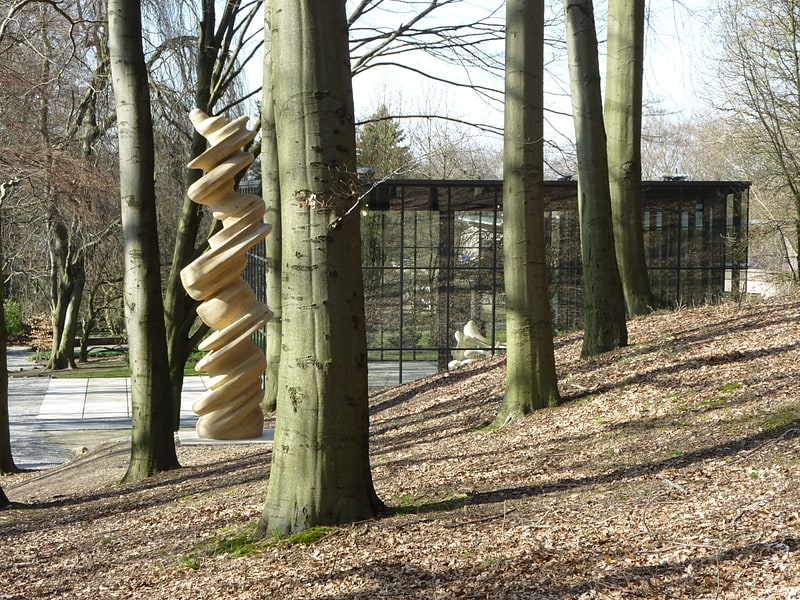
Skulpturenpark Waldfrieden is a sculpture park of the English sculptor Tony Cragg in Wuppertal, where numerous sculptures by other well-known artists are also on display, some on loan. Run as a private museum, the facility is operated by a non-profit foundation, the Cragg Foundation, which has been in existence since 2005.
Address: Hirschstraße 12, 42285 Wuppertal (Barmen)
Historische Stadthalle Wuppertal
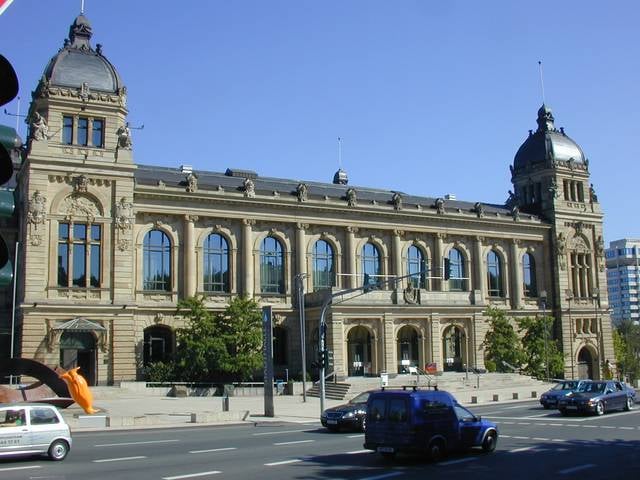
Bridge, City hall, Event space, Concert hall
Address: Johannisberg 40, 42103 Wuppertal (Elberfeld)
Evangelischer Friedhof Unterbarmen

The Unterbarmer Friedhof is a denominational cemetery in the Wuppertal district of Barmen, local part Unterbarmen, near the S-Bahn station "Wuppertal-Unterbarmen". It belongs to the united-evangelical parish Unterbarmen and was established in the year of the foundation of the parish in 1822. In 1897 and 1911 it was extended, its current area is about 16 hectares. To this day, the Unterbarmen cemetery is administered by the church congregation, although unlike most other major German cities, nearly all other cemeteries in Wuppertal are also run by religious congregations instead of the city administration.
Müllers Marionetten-Theater
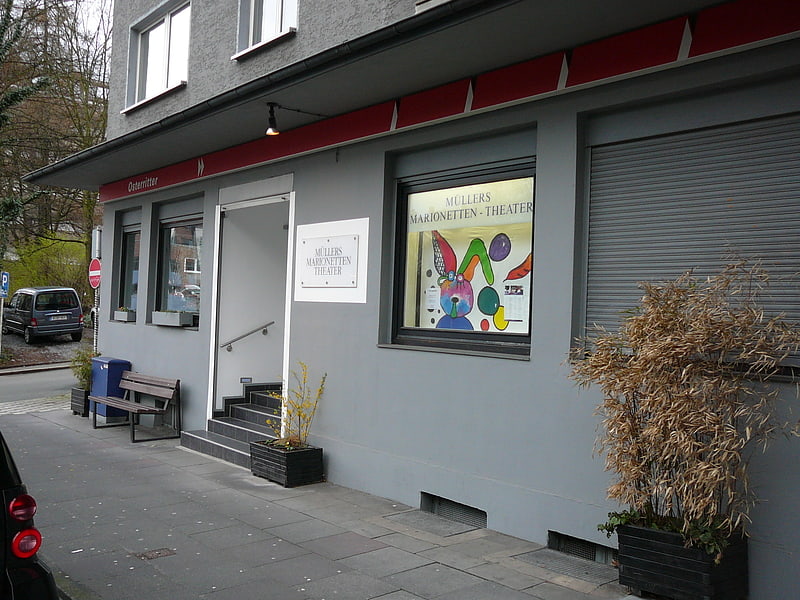
Theatre in Wuppertal, Germany. Müllers Marionetten-Theater is a theatre in Wuppertal, North Rhine-Westphalia, Germany.[19]
Basilika St. Laurentius
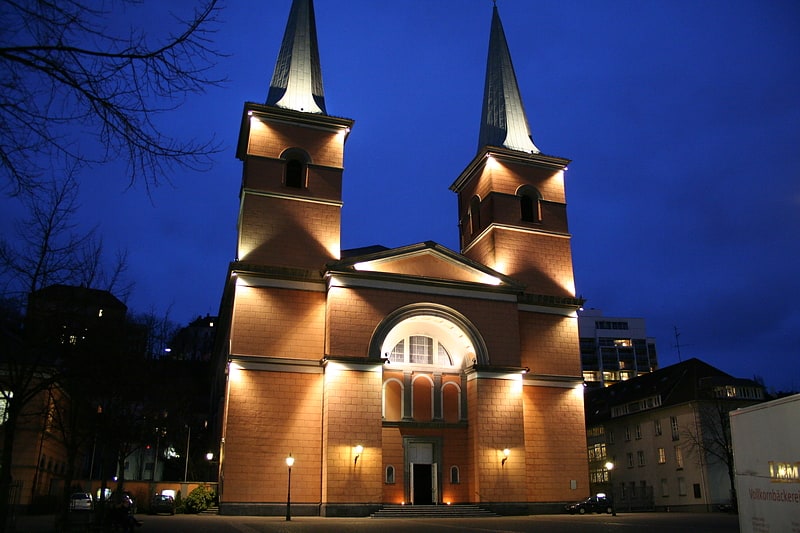
The Basilica of St. Laurentius in Elberfeld is the main Roman Catholic church and the most important Roman Catholic church building in Wuppertal.
Address: Friedrich-Ebert-Straße 22, 42103 Wuppertal (Elberfeld)
Arboretum Burgholz
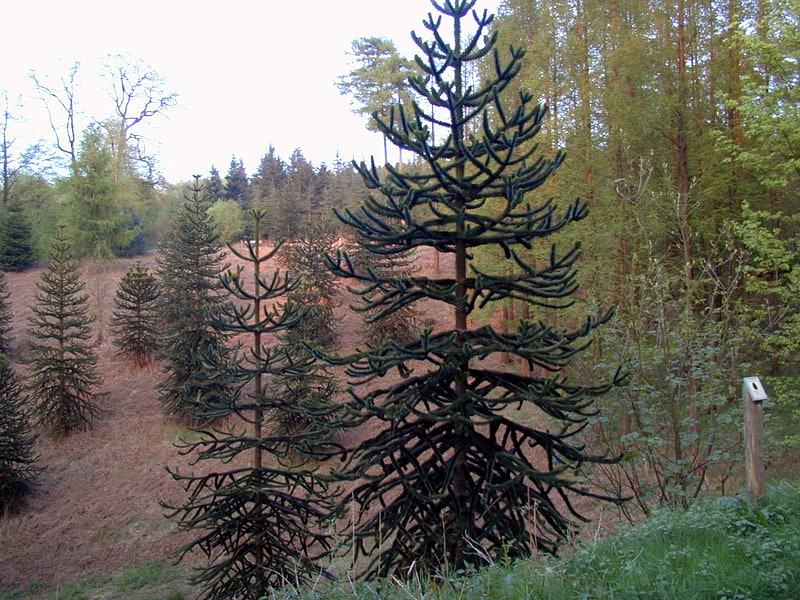
The Arboretum Burgholz is an arboretum maintained by the Landesbetrieb Wald und Holz Nordrhein Westfalen. It is located in the Staatsforst Burgholz at Friedensstraße 69, Wuppertal, North Rhine-Westphalia, Germany, and open daily without charge.
The arboretum was begun before 1900 to test the suitability of exotic tree species for forestry, and became an arboretum in large part through the efforts of forester Heinrich Hogrebe (1913–1998). It now contains over 130 deciduous and coniferous tree species arranged in North American, Asian, and Mediterranean plantings, with four marked hiking trails.[20]
Elisenturm

The Elisenturm is a good 21 meters high observation tower in Wuppertal in a park on the ridge of the Hardt, north of the Wupper.
The tower received its name in honor of Elisabeth Ludovika of Bavaria, called Elise, the wife of Frederick William IV of Prussia. In 1820, the textile manufacturer and city councilor Engelbert Eller founded a country estate on the Hardt with a villa, orangery and factory buildings. In 1838, he built the tower as an observatory on the foundation of an old windmill from 1812. From about 1850 it was open to the public as an observation tower. Eller's widow bequeathed the property to the German Red Cross, which transferred it to the city of Wuppertal in 1907. The park surrounding the tower became part of the botanical garden founded in 1890 in 1910. After World War II, the Elisenturm was again used as an observatory by the Volkshochschule, but became increasingly dilapidated.
After a thorough renovation in the 1960s, the tower is now accessible on guided tours. The domed hall inside serves as an exhibition space and wedding hall.
Address: 1a Elisenhöhe, Wuppertal (Elberfeld)
Neue Kirche
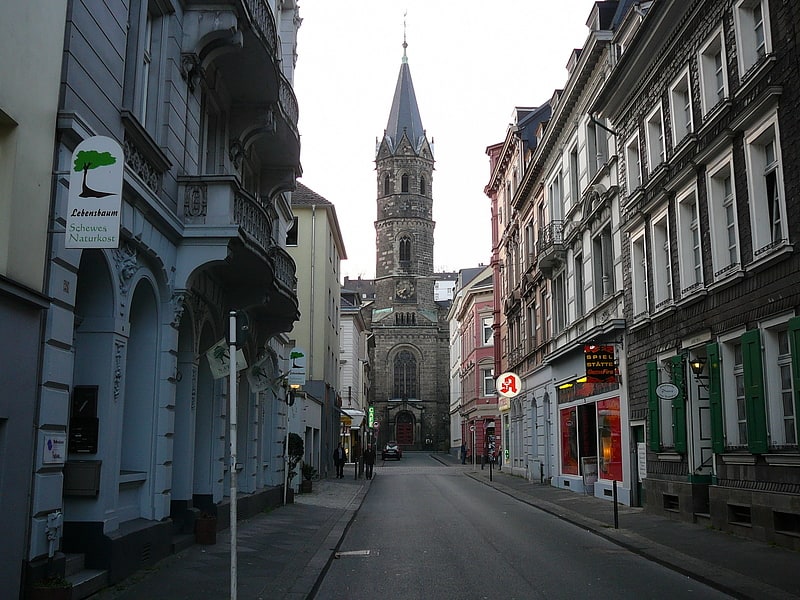
The New Reformed Church, also called New Church, II Reformed Church, popularly called Sophienkirche after the street on which it stands, is the second house of worship built for the Reformed Church of the present-day Wuppertal district of Elberfeld.
Address: Sophienstraße 3b, 42103 Wuppertal (Elberfeld)
Klosterkirche St. Maria Magdalena
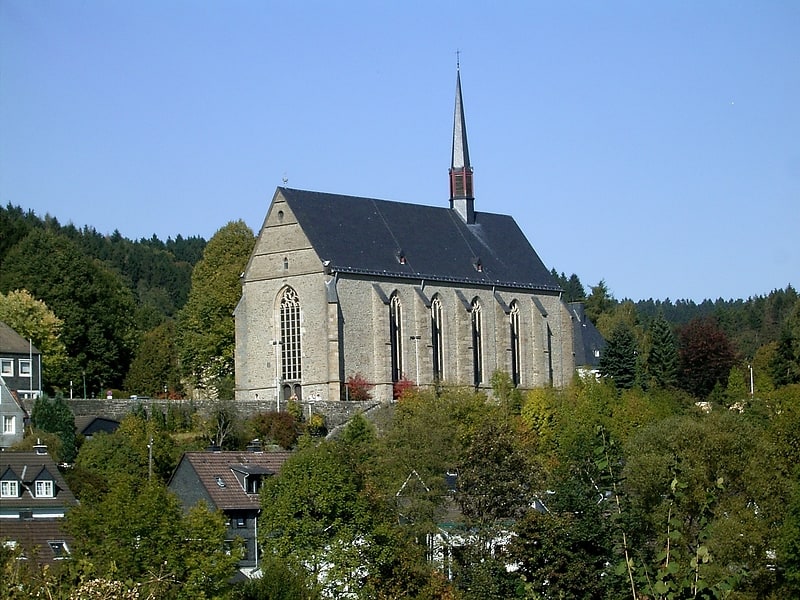
The Convent Church of Saint Mary Magdalene is a church building in Beyenburg, in the southeastern part of the city of Wuppertal.
Address: Beyenburger Freiheit 49, 42399 Wuppertal (Langerfeld-Beyenburg)
Rathaus Stadt Wuppertal
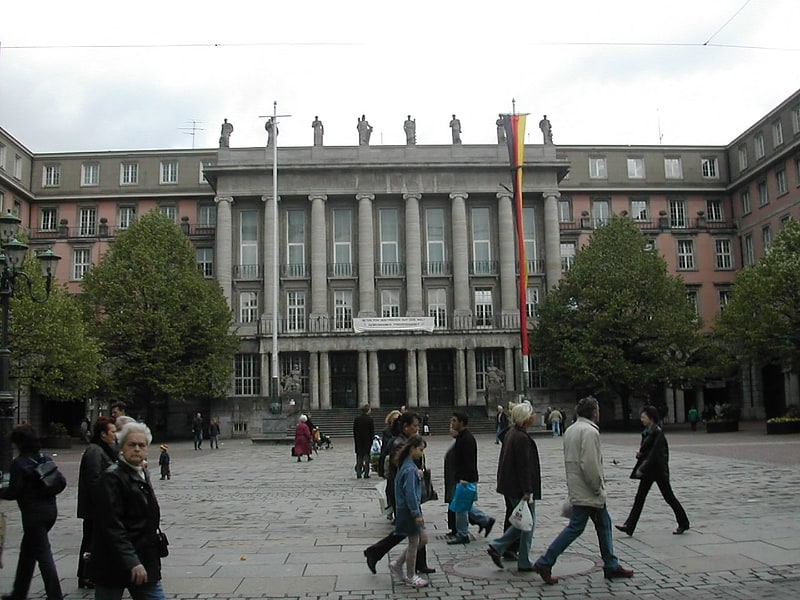
Barmen City Hall, also called Barmer Rathaus, is the seat of the council of the city of Wuppertal and the headquarters of the city administration.
Address: Johannes-Rau-Platz 1, Wuppertal (Barmen)
Laaker Kirche
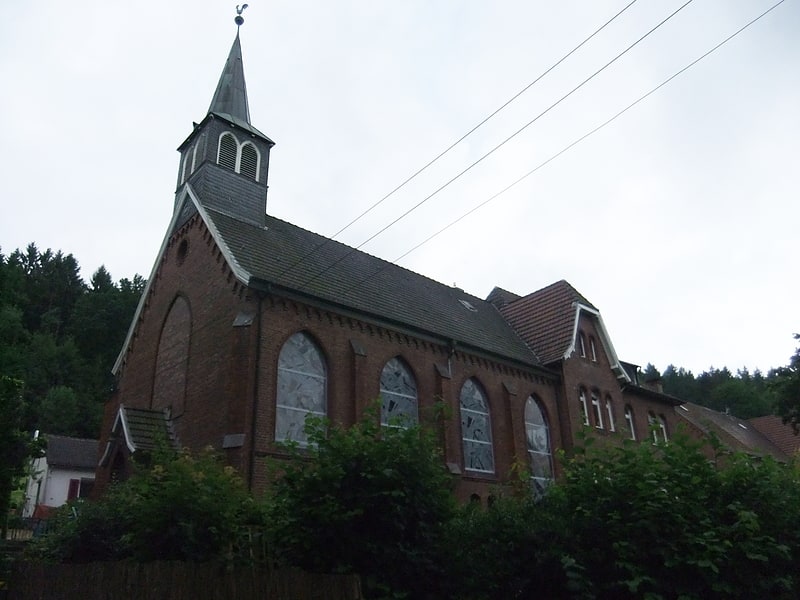
The Laaker Kirche is a Protestant church in the Wuppertal district of Laaken and since October 2003, with the Kirche am Kriegermal in the town center of Beyenburg, one of two preaching places of the Protestant parish of Beyenburg-Laaken.
Address: Zu den Erbhöfen 53, 42287 Wuppertal (Langerfeld-Beyenburg)
Friedhofskirche
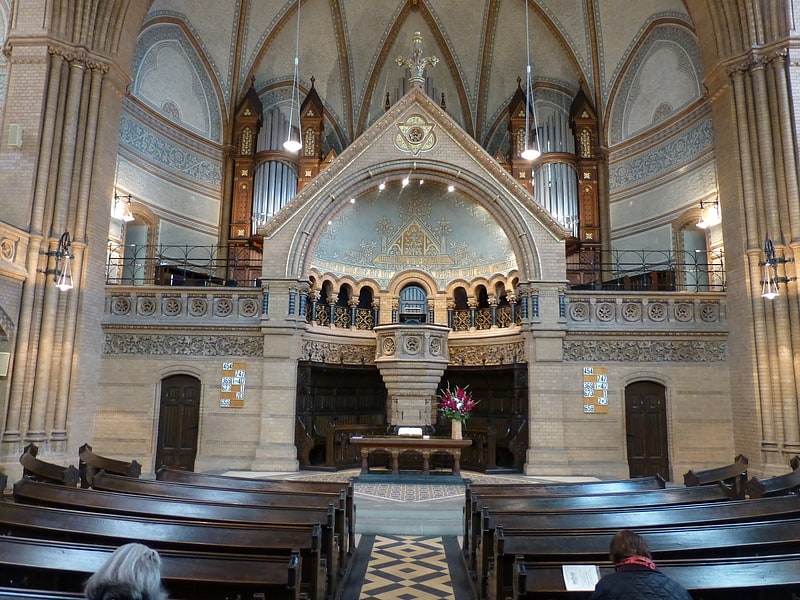
The cemetery church in Elberfeld is one of the largest churches in Wuppertal and the third oldest place of worship built for the Reformed Church in Elberfeld. Important Reformed pastors such as the moderator of the Reformed Federation Hermann Albert Hesse or the church historian Hermann Klugkist Hesse officiated at it. With 1,020 seats, it is the second largest Protestant church in the Rhineland after the Constantine Basilica in Trier.
Address: Hochstraße 15, 42105 Wuppertal (Elberfeld)